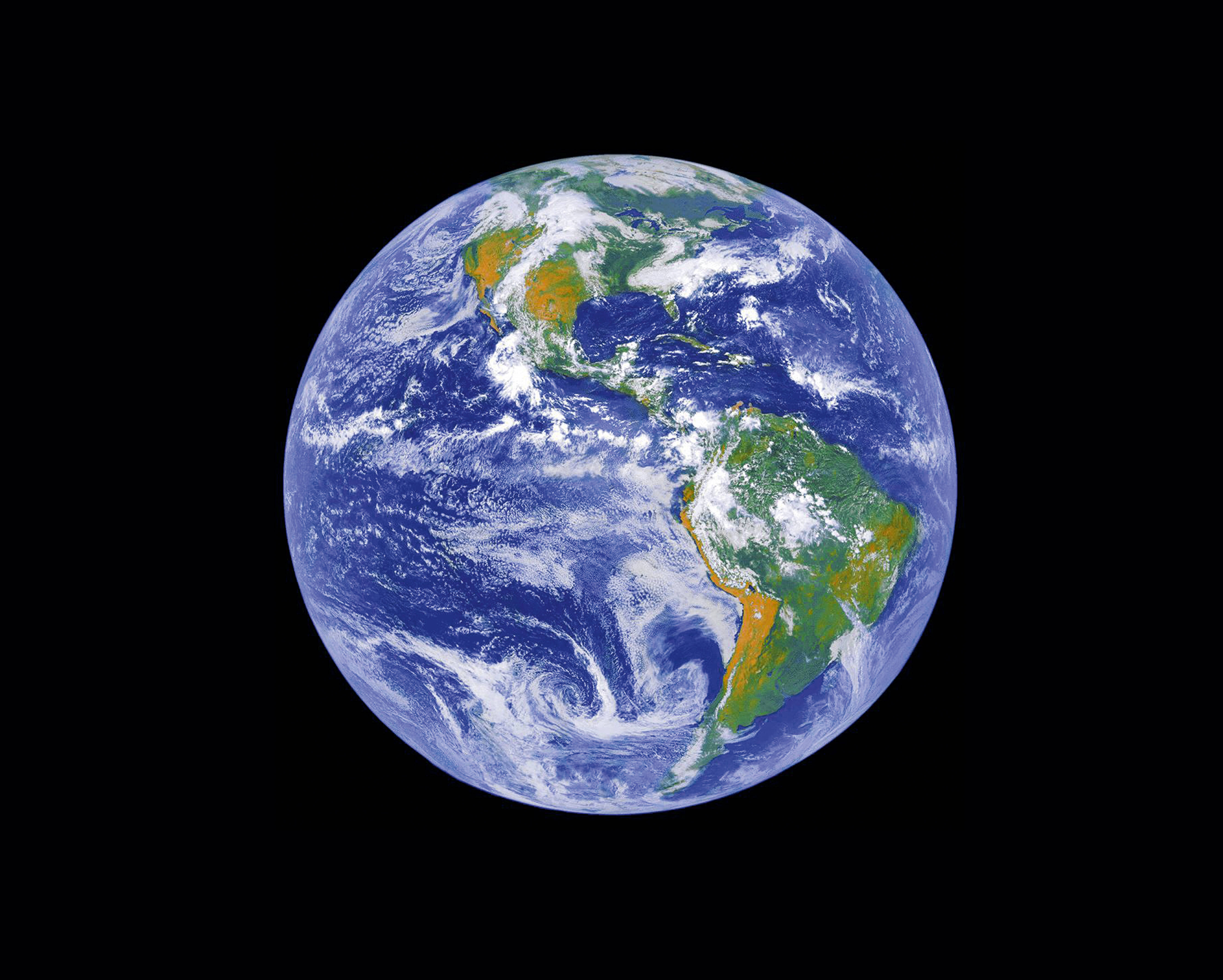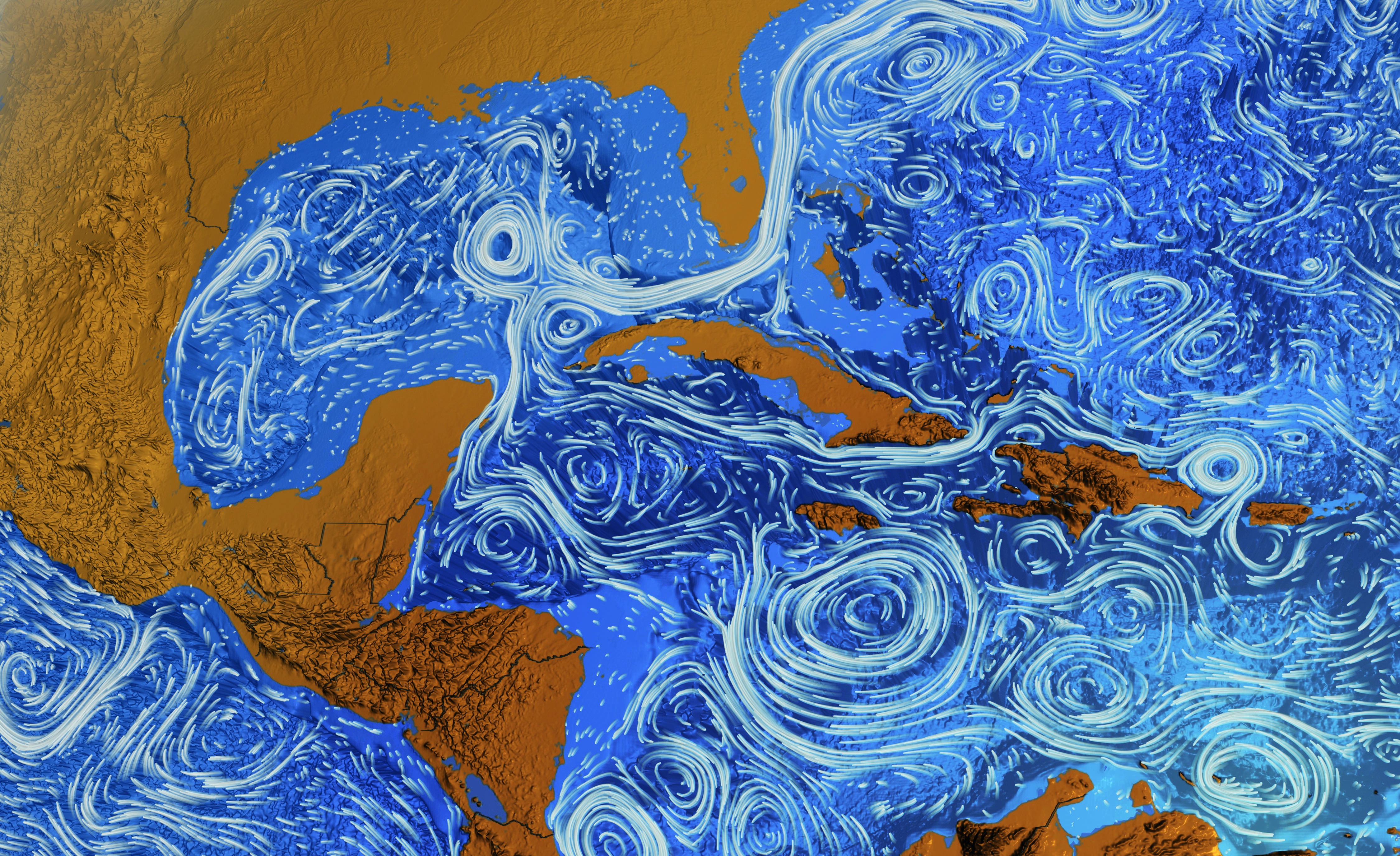
What NASA saw in the Ocean
The Space Administration’s contrasting views of our seas hold both hope and fear
Even self-confessed landlubbers will still find much to admire in our new book Ocean. Subtitled Exploring the Marine World, this new title takes readers on a voyage into the beauty, complexity and mystery of the seas of our planet, via more than 300 different images.
There are works by well-known artists, including Ansel Adams, Claude Monet, JMW Turner, Sebastião Salgado, David Hockney, and Damien Hirst. Yet there’s plenty more to the book besides these big names. Ocean contains images of undersea sculptures as as well as ocean plastics; the cover from the 1970, surprise hit LP, Songs of the Humpback Whale, as well as an early 20th century whaling scene carved onto a whale’s tooth; and images from films that romanticise the sea, such as Finding Nemo, alongside ones from movies in which the ocean is the bad guy (look out for the artwork for The Poseidon Adventure film poster, dating from 1972).
The National Aeronautics and Space Administration (NASA) has several images in the book, and while, unlike artists, filmmakers or record producers, it feels no need to dramatise the ocean, its images produce equally contrasting reactions.
The first, entitled Earth Science (above), taken in 1994, is a familiar view of our planet, first seen a few years earlier, in the famous Blue Marble astronaut’s photograph from the early 1970s; in this later iteration, our globe is shot from two different satellites, before being reconstructed into a single, whole photo.
“When seen from space, geopolitical boundaries and divisions disappear, and the enormity of Earth’s oceans becomes inescapable,” explains the text in Ocean, before adding that photos such as this are “often credited with changing humanity’s understanding and appreciation for our planet, as well as each other, and for inspiring the development of the environmental movement to protect Earth’s obvious fragility.”

Perpetual Ocean, 2011, by NASA
That simple, peaceful pæan for global, ecological care stands in contrast to a later image from the Space Administration. Created in 2011 and entitled Perpetual Ocean, the image is a still version of a dynamic visualisation of tens of thousands of ocean currents tracked by NASA Estimating the Circulation and Climate of the Ocean (ECCO) project.
“By combining images from satellites with sophisticated numerical tools, the project set out to model how oceanic circulation evolves over time,” explains the book. Those churning waters help us back on earth; NASA believes the oceans have absorbed 90% of the warming that has occurred in recent decades due to increasing greenhouse gases, and that the top few metres of the ocean store as much heat as the planet’s entire atmosphere.
Changes in these circulating currents may affect everything from sea level rises through to once-reliable weather patterns; “some of the larger currents, such as the Gulf Stream in the Atlantic Ocean and the Kuroshio in the Pacific Ocean, carry warm waters thousands of kilometres through the oceans like a great conveyor belt,” explains our new book’s text.
We can all appreciate the beauty and delicacy of the earth in that first picture, but it’s this less stable view of the world’s oceans that offers us more uncomfortable insight into what the oceans have in store.

Ocean
To see more incredible ocean images, order a copy of Ocean here.